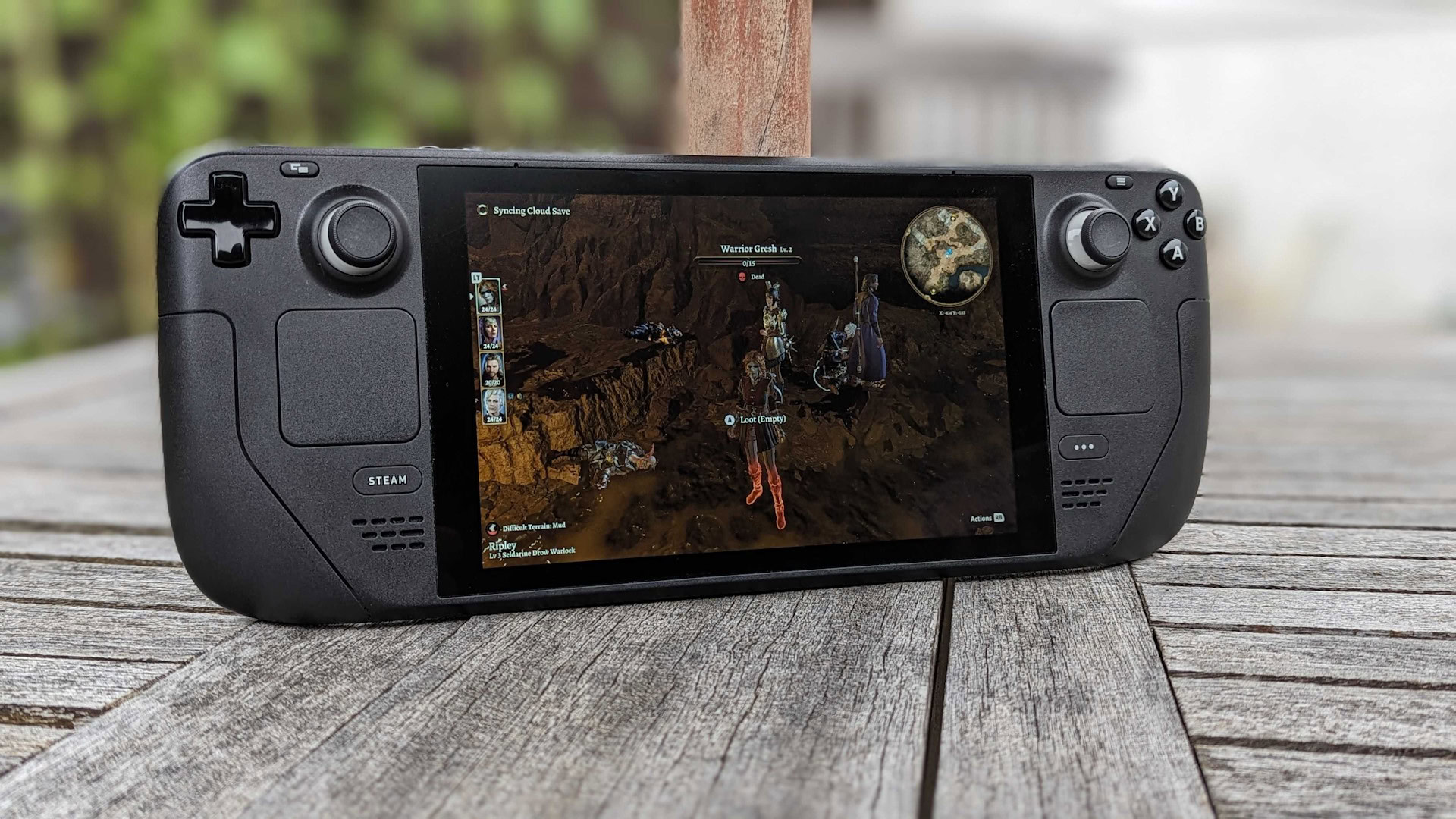
Oliver Cragg / Android Authority
The original Steam Deck was a surprise hit, even for Valve, which up until the handheld’s launch in 2022 had developed a poor track record with first-party hardware — its Index VR headset is the only other device it still has on the market. The Deck has been so successful, in fact, that there’s now a burgeoning industry of handheld gaming PCs.
To stay relevant, Valve recently announced the Steam Deck OLED, a revision with a number of upgrades. So how does the new model compare against the LCD Steam Deck, which is still on sale at a lower cost? Which one should you actually buy?
Steam Deck LCD vs OLED: At a glance
| Steam Deck LCD | Steam Deck OLED | |
|---|---|---|
|
Operating system |
Steam Deck LCD
SteamOS |
Steam Deck OLED
SteamOS |
|
Processor |
Steam Deck LCD
AMD Aerith APU system-on-chip (7nm) |
Steam Deck OLED
AMD Aerith APU system-on-chip (6nm) |
|
Memory |
Steam Deck LCD
16GB of LPDDR5 RAM |
Steam Deck OLED
16GB LPDDR5 RAM |
|
Storage |
Steam Deck LCD
256GB NVMe SSD |
Steam Deck OLED
512GB/1TB NVMe SSD
Expandable via microSD card |
|
Display |
Steam Deck LCD
7-inch, 60Hz 1280×800 LCD |
Steam Deck OLED
7.4-inch, 90Hz 1280×800 HDR OLED |
|
Connectivity |
Steam Deck LCD
Bluetooth 5.0
Wi-Fi 5 1x USB-C 3.2 Gen 2 3.5mm headphone jack |
Steam Deck OLED
Bluetooth 5.3 |
|
Battery |
Steam Deck LCD
40Whr (2-8 hours) |
Steam Deck OLED
50Whr (3-12 hours) |
Since we’ll talk about display, battery, and storage tech in later sections, the first thing to note here is that performance-wise, the two models are mostly identical. They use the same core processor technology, the only differences being that the OLED model uses a smaller, more efficient 6nm design, faster 6,400MT/s memory, and better cooling. This can sometimes help push framerates marginally higher, but you won’t suddenly be running Cyberpunk 2077 at maximum detail. It’s a revision, not a sequel.
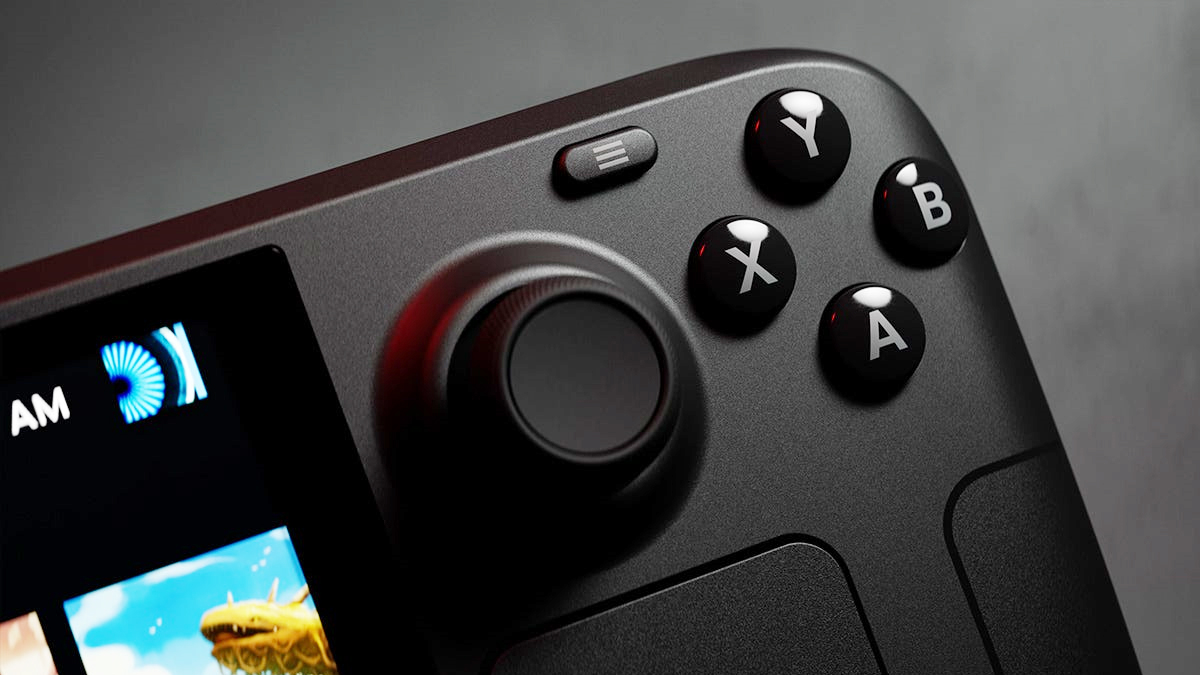
That said, there’s a variety of subtler improvements on the OLED model. The touchscreen is more responsive, haptic feedback is both better and more consistent, and there’s now a dedicated Bluetooth antenna, which makes it possible to (reliably) connect multiple controllers. Valve has even improved repairability, the feel and responsiveness of trackpads and analog sticks, and the overall the weight of the console, though the latter is mostly due to the move to OLED.
Wi-Fi 6E translates to superior network speeds, while Bluetooth 5.3 enables newer audio codecs, such as HD and low-latency versions of aptX. We do wish Valve had upgraded the USB-C port to 4.0, but we doubt anyone will complain about having 3.2 Gen 2, which is more than fast enough for docks and external displays.
Steam Deck LCD vs OLED: Display
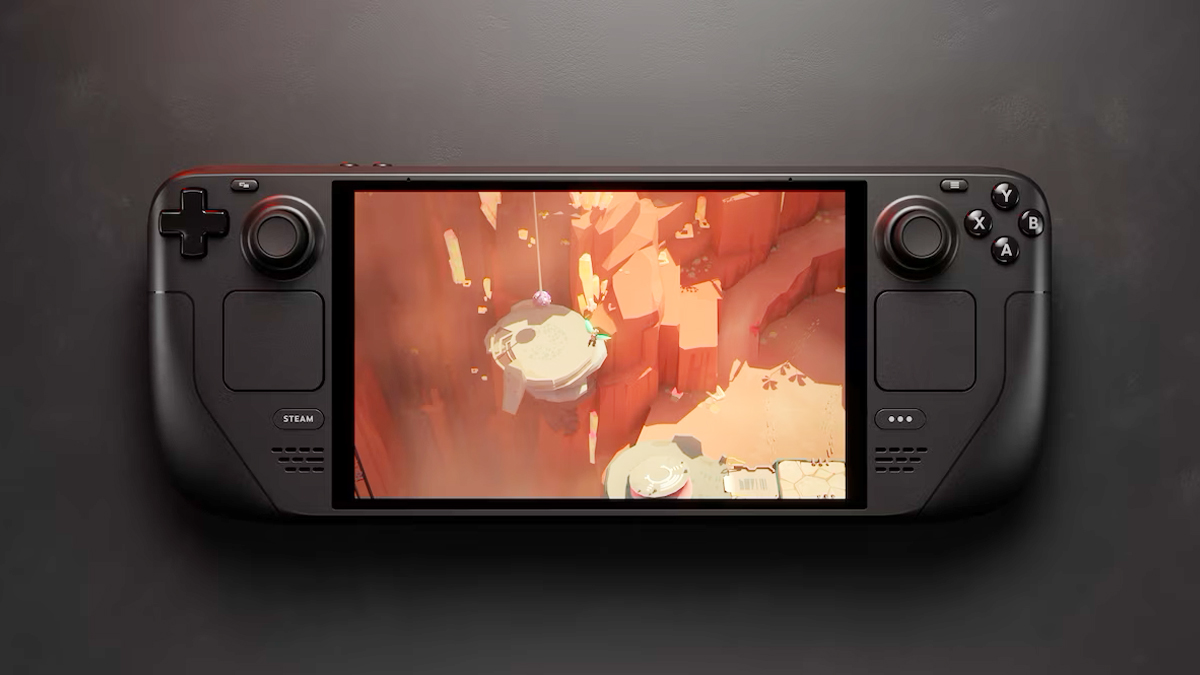
This is the big one, of course. OLED makes a striking difference, allowing for true blacks (no more backlight) as well as more and brighter colors. Only the OLED model supports HDR content, although not in video streaming apps like Netflix or YouTube. We’ll see if future app updates change that.
Peak brightness, meanwhile, has risen to 1,000 nits, which makes the OLED Deck far better suited to gaming in sunlight. You also get smoother 90Hz refresh rates, up from 60Hz on the LCD panel.
The OLED’s screen is slightly larger at 7.4 inches versus the LCD’s 7. It’s not going to dominate your view like, say, the 8.4-inch panel on the Ayaneo Kun, but it’s nice to have something that better fills out the Deck’s design and makes text a bit more legible.
Only the OLED Deck has the option of an etched anti-glare display. You have to spend on a top-tier configuration to get that, though, and with the strong contrast OLED provides, it’s certainly not necessary.
Steam Deck LCD vs OLED: Storage options
The OLED Steam Deck is available with either 512GB or 1TB of internal NVMe SSD storage. That should be plenty for most people, unless perhaps you’re planning to use your Deck as a desktop replacement, but at that stage you should be considering external storage hooked up to a dock.
Going forward, the only storage tier for LCD will be 256GB. Valve is still selling 64GB and 512GB options at the moment, but only until supplies run out, and we’d avoid the 64GB option unless you’re only planning to stream games via Steam Link. Some modern triple-A titles are well over the 64GB mark.
All Steam Decks have a microSD slot, and yes, you can install games to a card. That’s less than ideal though, since microSD cards will always be slower than a Deck’s internal SSD.
Steam Deck LCD vs OLED: Battery life
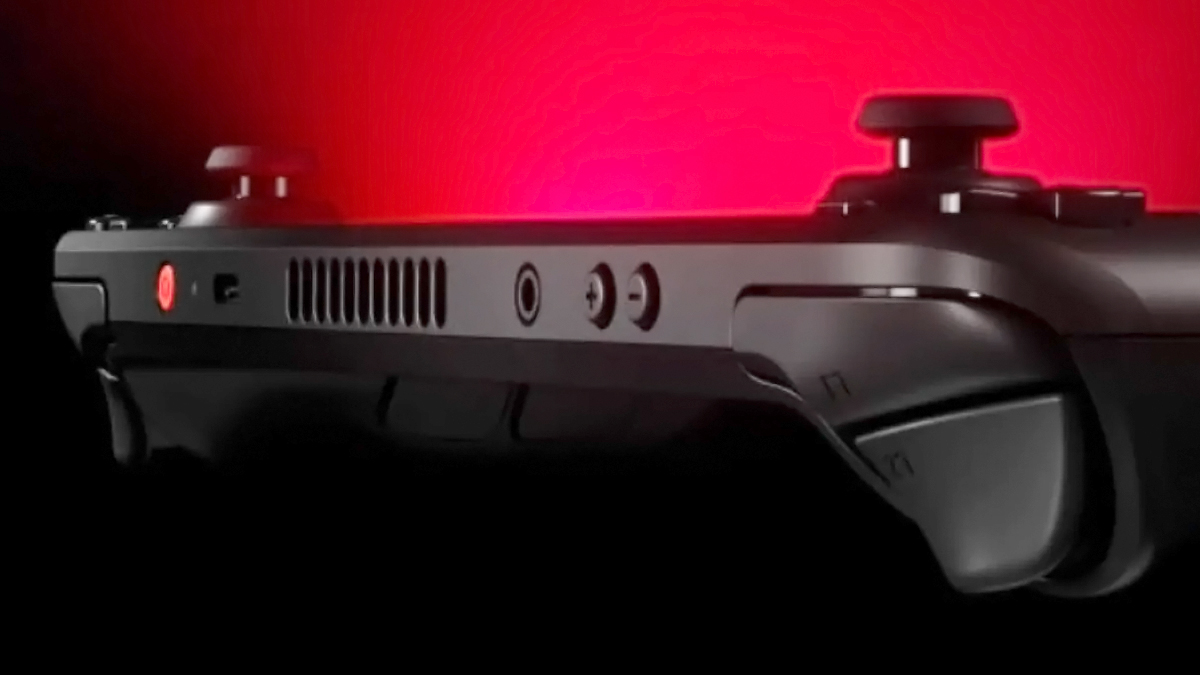
For some people, this category may actually be more significant than changes in display tech. That’s because the LCD Steam Deck is an infamous battery hog, getting no more than 8 hours from its 40Whr pack, sometimes as little as 2 when playing the most demanding 3D games. It’s not uncommon for people to remain plugged in while they play.
You might still want to do that with the newer model, but the combination of OLED, a 6nm processor, and a larger 50Whr battery means that on paper, it can last anywhere between 3 to 12 hours. It’s capable of extended sessions without plugging in, even on long cross-continental flights. It’s debatable as to how “portable” the LCD Deck really is if it’s often tethered to a wall.
Speaking of which, the OLED Deck ships with a 2.5m (8.2ft) power cable instead of the 1.5m (4.9ft) one that comes with the LCD model. That won’t have an impact in most cases, but it’s a nice convenience if you’ve got a lot of clutter around your gaming space or the nearest outlet is far away.
Steam Deck LCD vs OLED: Price
- Steam Deck LCD (256GB): $399
- Steam Deck OLED (512GB): $549
- Steam Deck OLED (1TB): $649
Naturally, this is the reason someone would consider the LCD version. A $399 handheld PC that can handle everything from Blasphemous to Elden Ring is still pretty remarkable, especially considering that it’s just $50 more than the Nintendo Switch OLED. If you add a dock and peripherals, you can turn a Steam Deck into a full-fledged TV console, a desktop PC, or both.
The OLED Deck is still reasonably priced, starting at $549. Its main competition is the Z1 Extreme version of the ASUS ROG Ally, which is substantially faster and a native Windows 11 PC, but also $700 while lacking perks like OLED, a trackpad, or an optimized handheld interface.
We’ll use this space to point out that every Steam Deck ships with a case and a 45W charger. If you spring for the 1TB model, you get a bonus, slimmer case that fits inside the bigger one, but can also be used solo if you need to maximize room in your bag.
Steam Deck LCD vs OLED: Which should you choose?
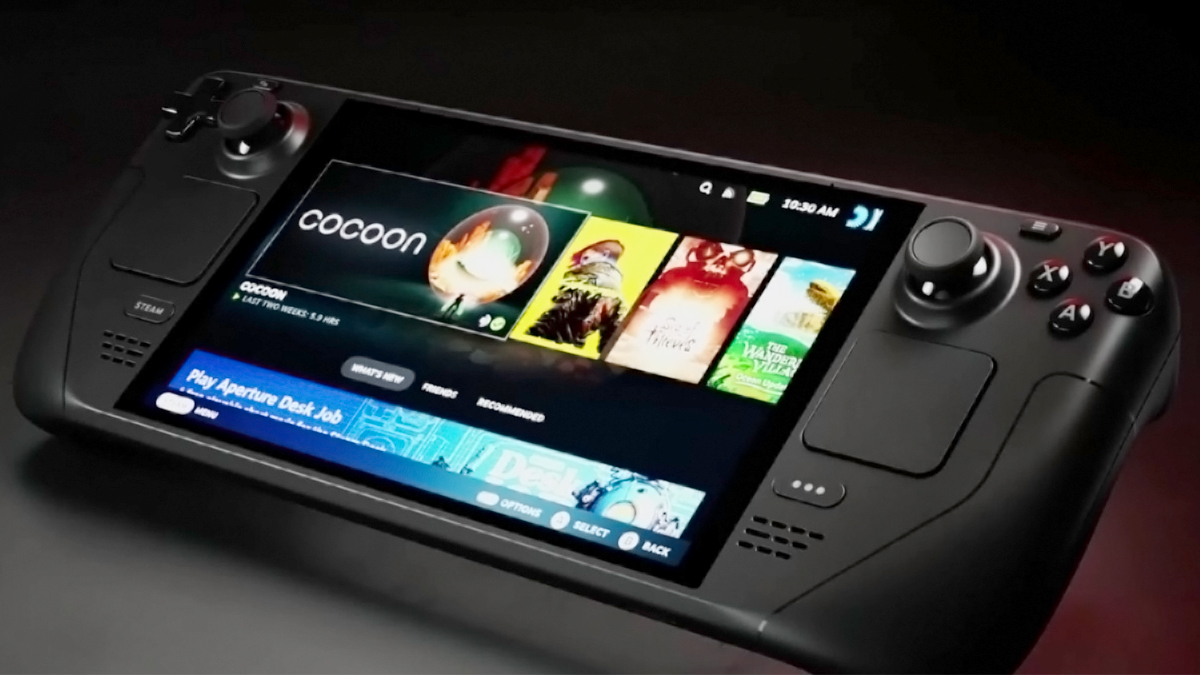
If you can at all afford it, go with the Steam Deck OLED. The screen and battery improvements alone should be enough to justify the price gap. When you factor in extra storage, improved wireless tech, and the many control tweaks, it makes for a far more refined experience, as if it’s what the Deck should’ve been in the first place.
The OLED model feels like what the what the Steam Deck should’ve been in the first place.
That being said, the LCD model is still a very capable machine. It has the same core processor tech, and with a $399 pricetag, it can be a viable alternative to the Nintendo Switch. You’ll just want to keep it plugged in whenever possible, and it might be hard to shrug off the envy if you get to see an OLED Deck in person.
